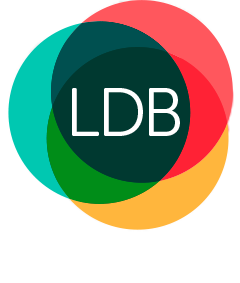Navigating company tax rate reductions from 2017 to 2027
June 22, 2017

By Daniel Dubois
In the 2016-17 Budget, the government announced that it would reduce the corporate tax rate progressively from 30 per cent to 25 per cent.
For the 2016 financial year reductions to 28.5 per cent were already available for companies with turnover below $2 million. Turnover is defined as all ordinary income earned in the ordinary course of running a business for the income year.
Support secured in the Senate now mean this turnover threshold will increase to $10 million for the 2017 financial year, $25 million for 2018 and $50 million for 2019, with a rate of 27.5 per cent rate eventually applying to corporate tax entities undertaking business with less than $50 million turnover.
Tax rates will progressively drop over the next 10 years to 25 per cent, as follows.
| Year | Aggregated Annual Turnover Threshold | Entities under the Threshold | Other Corporate Tax Entities |
| 2015–16 | $2m | 28.5% | 30% |
| 2016–17 | $10m | 27.5% | 30% |
| 2017–18 | $25m | 27.5% | 30% |
| 2018–19 | $50m | 27.5% | 30% |
| 2019–20 to 2023–24 | $50m | 27.5% | 30% |
| 2024–25 | $50m | 27.0% | 30% |
| 2025–26 | $50m | 26.0% | 30% |
| 2026–27 | $50m | 25.0% | 30% |
Source: Australian Taxation Office.
Company PAYG instalments
For Pay-As-You-Go (PAYG) instalment purposes, the Australian Taxation Office (ATO) can decide to anticipate the passage of a tax rate reduction.
Accordingly, for activity statements that have not yet issued, the ATO has indicated they will incorporate the lower (27.5 per cent) tax rate where applicable as soon as possible.
Companies that currently have an activity statement that does not reflect the reduction in the corporate tax rate can vary their instalment rate or amount to reflect the reduction, if they believe they are eligible.
Companies that choose to reflect the rate reduction will not be subject to a variation penalty.
Tax planning considerations
Dividend franking
The final position is unclear due to various changes during passage through the Senate however, it appears that dividends will only be franked to the extent of the tax rate applicable to the entity which will reduce. For example, 27.5 per cent moving down to 25 per cent.
The original position allowed dividends to be franked in accordance with tax paid in the year of assessment. This is still unclear so watch this space.
Individuals and superannuation funds
Individuals will eventually receive lower rates of franking on dividends and will incur a greater amount of top-up tax (or lower refunds) depending on the difference between their marginal rate and the company tax rate.
In some cases, this will diminish the benefit of the value of the rate reduction however, timing may provide some benefit.
Corporate beneficiaries
Only companies with business trading in the financial year will be eligible for the reduced company rates.
Corporate beneficiaries will continue to pay tax at 30 per cent and are likely to be subject to top-up tax on dividends of up to 5 per cent.
Depending on the tax strategy used, this can have significant implications with a trade-off between tax payable and asset protection.
Transition of trusts to companies
There is an opportunity to reduce the effective tax rate to 27.5 per cent for trusts who transition to companies.
Consideration will also need to be given for the differing capital gains tax treatment between companies and trusts with respect to assets with unrealised capital gains.
International businesses
For foreign companies receiving dividends from Australian entities, this will represent a tax cut fully passed along with no further income or withholding taxes payable.
Small business entity concession implications
An important distinction needs to be made between a small business entity for income tax purposes and Capital Gains Tax (CGT) purposes, which was previously a common definition.
A new definition for CGT small business entity has been established which will remain at $6 million.
Accounting treatment for larger entities
For larger entities using tax effect accounting, given the reduction is likely to pass into law before 30 June 2017, this will impact the measurement of current tax liabilities and deferred tax assets and liabilities at June 30, 2016 under AASB 112 Income Taxes. It requires that current and deferred tax assets and liabilities be measured using tax rates that have been enacted or substantively enacted by the end of the reporting period.
Where recognised, deferred tax assets attributable to tax losses will need to be recalculated.
Given deferred tax balances need to be recognised at the rate appropriate for the year of realisation, it is not clear yet how some more complex deferred tax balances like deprecation will be dealt with at this stage.
In practice, the staged implementation to reducing company tax rates may cause headaches if you are trying to determine what tax rates to use for the recovery of deductible temporary differences, or the settlement of deferred tax liabilities, particularly where recovery or settlement occurs over multiple reporting periods.
Need help navigating the changes?
If you would like help with understanding the effect of these changes on your business, family group or superannuation fund, please do not hesitate to contact your LDB adviser or Daniel Dubois by phoning (03) 9875 2900. Alternatively, send us a note via the contact form below.
